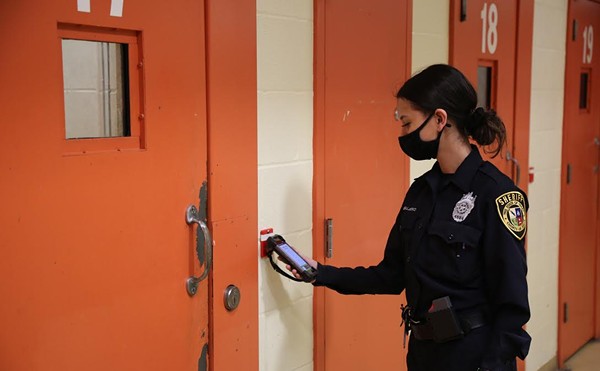Greg Harman
Modeling of a worst-case meltdown and explosion at the South Texas Project nuclear complex in Matagorda County performed in 1982 suggested 18,000 area residents would die, followed by 4,000 additional cases of cancer within 30 years.
Strangely, when just such as accident occurred in 1986 in northern Ukraine, the United Nation's World Health Organization, International Atomic Energy Agency, and dozens of other international agencies put the death toll at about 50. Thousands of others may ultimately be sickened and die from the fallout, the contingent allowed, but the numbers were far below what experts had been expecting.
As the UN's figures were coming out, regional doctors in the Ukraine were complaining of being “overwhelmed” by new cancers. Nikolai Omelyanets, deputy head of the Ukrainian National Commission for Radiation Protection, suggested a few years ago that 500,000 might have already died from the accident.
Now, a report published in the New York Academy of Sciences drawing on more than 5,000 studies â?? many of which had not been translated out of Russian until recently â?? suggests the number of deaths attributable to Chernobyl may have already approached a million.
“The conclusions reached by this report call into question the ability or the willingness of the WHO to undertake reliable health studies,” Cynthia Folkers, radiation and health specialist with Beyond Nuclear in a prepared release. “It points to the agency's conflict of interest in its working relationship with the IAEA whose mandate is to expand nuclear energy use while the WHO objective is to promote and protect health. It is impossible to investigate health consequences from radiation with any integrity while at the same time promoting nuclear power.”
With the Chernobyl fallout so far from settled, it seems strange that the U.S. Nuclear Regulatory Commission would do anything to trouble public perception of risk at U.S. nuke plants. Yet the NRC is doing just that by fighting off requests for documents showing how the South Texas Project Nuclear Operating Company would respond to a fire or explosion at the plant â?? even after being ordered to release a redacted version of those documents by its own Atomic Safety and Licensing Board.
The three groups pushing for the release of that information â?? the Sustainable Energy and Economic Development (SEED) Coalition, Public Citizen and the South Texas Association for Responsible Energy â?? filed a legal brief with the NRC last month after the NRC appealed the judgment of the ASLB. The applicants (who could not be reached this morning) say the agency's secrecy is at odds with President Barack Obama's stated commitment to creating more transparency in government.
Meanwhile, Victor Dricks, spokesperson for the NRC, which has been fighting release of the document for six months, said that if the ASLB had ordered the document released it will be released. (We're waiting for a follow-up call explaining the apparent contradiction.*)
Why is all this important? Because sometime this summer $10 billion in federal funds are expected to flow to one of three competing projects. And STP's expansion hinges on receiving those loan guarantees, NRG Energy officials have said.
Last week, George Vanderheyden, CEO of UniStar Nuclear Energy, told Energy & Environment that what had been considered a three-way contest had boiled down to a two-way race between STP in Matagorda County and UniStar's proposed plants at Calvert Cliffs, Maryland.
“It is really is down to the two of us,” Vanderheyden said. “These two plants are neck and neck.”
DOE spokesperson Ebony Meeks could not comment on which plants were racking up the most points in the competition and downplayed talk of a decision in a matter of weeks.
“We could easily run into months, from my understanding,” Meeks told the Current.
Shoot. By that time, we're certain to have this whole 1,000,000-versus-50 death toll thing figured out, and the nuclear lions will be lying down with the disclosure-requiring Obama lambs. Or was that “lying to?”
















